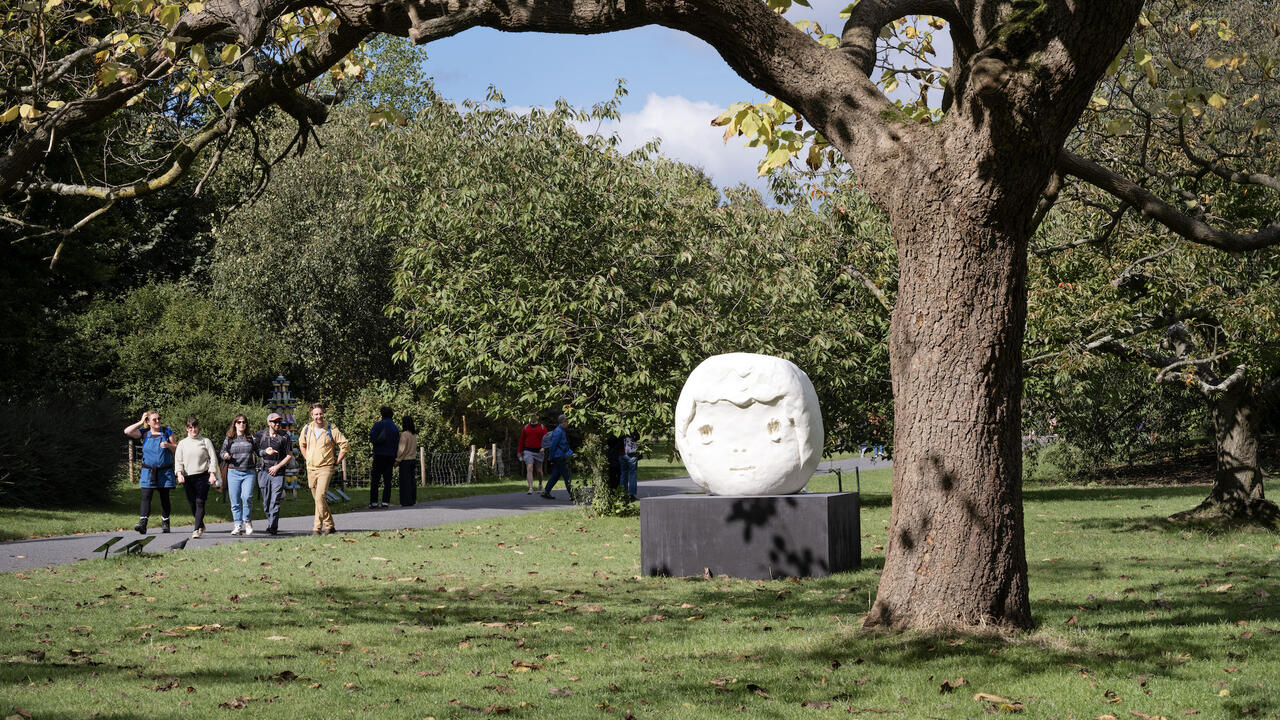Fred Tomaselli
White Cube, London
White Cube, London

Suppose you’re a stoner and you want to be an artist? Fred Tomaselli’s first response, in the 1980s, was to make installations that sought to alter the viewer’s expected perceptions. His second, in the decade that followed, was to build mind-altering substances – pills and pot leaves – into the resinous, surfboard-like substance of his collage paintings. The intricate results resemble esoteric abstraction, but their subjects – Adam and Eve, say, or a falling man – suggest complications in reaching the trippy ideal. This treatment of painting as a psychoactive site is effective, but there is something awkward about bringing the real in, especially where the figure is involved.
Tomaselli stopped using drugs in 2005, the same year he hit on the idea of making works using the front pages of The New York Times. Yet, despite the absence of pills, his characteristic aesthetic remained, mixing conceptual concerns with such sources as Tibetan thangkas (fabric painted with Buddhist deities), Persian miniatures, pop and minimalism. Now, however, the tension between the real and the ideal is immediate. Certainly, plenty of artists have intervened on newspapers to satirical effect but, in Tomaselli’s case, these works build on a history of pictorial strategies derived from escapist tendencies.

The artist’s painted images typically occupy a third of each front page and sometimes include collaged elements. Lately, he’s taken to blowing these up to around 2m2. The scale ramps up the impact of the dozen presented in this show and makes the eight at normal newspaper scale feel somehow subsidiary. Either way, the idea – to collide escapism with gritty reality and see what gives – is attractive. And the implication – that all news is subjectively presented and received – is right on the topical money of a ‘post-truth’ worldview.

Maybe it’s just the nature of what’s available to report on, but violence, tragedy, environmental problems and bad leadership dominate. ‘The Times’ series (2005–ongoing) is bad news even before Tomaselli intervenes, so what do his interventions add? Sometimes, he mocks his subject fairly straightforwardly: the hyper-masculine Vladimir Putin appears on Tuesday, March 4, 2014 as a naked woman wearing a red Pussy Riot balaclava. At other points, the artist’s additions underline a trend: Tuesday, April 27, 2010 augments the complexity and incomprehensibility of a diagram of political power relationships. Apparent censorship may draw attention to attempted cover-ups: Sunday, October 4, 2009 replaces the body of a woman paralyzed by a medical blunder with pixelating abstraction. And there’s empathy: Wednesday, July 23, 2014 sees flowers take over an image of mourning. Other taxonomies are possible – you can trace art-historical references, for example – and a sense of Tomaselli’s agenda begins to emerge: taking down those who have it coming, perhaps, or commemorating victims. The artist says he attempts to convey the ‘bipolar relationship between beauty and pain’ that defines life. ‘I’m swimming in the pool and everything’s great,’ he has said, ‘and then I walk out and there’s a homeless guy with scabs all over his legs asking for a dollar.’ The interplay is key here: the news always remains visible, the escape is never complete.

Displayed across White Cube’s lower gallery, these images constitute a powerful show. It occurs to me that I’ve ignored the upper floor. That contains photograms of pressed leaves overpainted with coloured bands to produce abstractions, as well as twelve ‘portraits’ which play on astrology, astronomy and personal experience by linking up, as substitutes for the stars, the drugs taken by each subject to build up their night sky ‘constellation’. These works lack the confrontation of world views that energizes ‘The Times’ series. Perhaps I was right to ignore them.






















